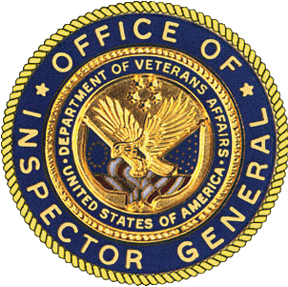Review of Veterans Health Administration’s Multi-Tiered Patient Safety Program
Report Information
Summary
The VA Office of Inspector General (OIG) conducted national surveys of Veterans Integrated Service Network (VISN) patient safety officers (PSO) and facility patient safety managers (PSM). Both surveys focused on patient safety topics, including oversight, culture, staffing, and training. The OIG also conducted interviews with Veterans Health Administration (VHA) Quality and Patient Safety leaders and PSOs. The OIG identified opportunities for VHA to strengthen patient safety programs at VISNs and facilities. Variability in PSO oversight related to site visit frequency and volume, and unclear expectations for PSO follow-up of facility patient safety program deficiencies, exist. PSOs reported barriers to meeting with community care third-party administrators to discuss quality and safety concerns. A majority of PSOs reported responsibilities for areas outside of the patient safety program while a high percentage of PSMs reported feelings of burnout. Facilities that have a PSM and additional staff achieved a higher level of compliance with completing patient safety requirements. Inclusion of an analysis of patient safety data within National Center for Patient Safety (NCPS) published quarterly reports would help staff drive improvement. Both PSOs and PSMs identified that patient safety is not always considered in decision making. Lastly, although PSO and PSM training is recommended, no formalized training requirements are available. The OIG made one recommendation to the VHA Under Secretary for Health related to evaluating PSO and PSM communication with community care third-party administrators and two recommendations to the VHA Assistant Under Secretary for Quality and Patient Safety related to establishing facility patient safety program oversight requirements and evaluating barriers that limit VISN and facility leaders’ engagement with PSOs and PSMs. The OIG made six recommendations to the VHA NCPS Executive Director related to evaluating quarterly reports, PSO and PSM burnout, patient safety program staffing, and implementing formalized training.
The Assistant Under Secretary for Health for Quality and Patient Safety establishes facility patient safety program oversight requirements for patient safety officers to include minimum frequency and volume of oversight activities and expectations for follow-up when patient safety program deficiencies are identified.
The National Center for Patient Safety Executive Director evaluates the National Center for Patient Safety quarterly reports, includes an analysis of patient safety data in the reports, and establishes a mechanism for National Center for Patient Safety, in conjunction with Veteran Integrated Service Networks, to direct interventions to promote improvements when facility patient safety program requirements are not met or if deemed necessary to enhance patient safety programs.
The Under Secretary for Health evaluates barriers to communication between third-party administrators and patient safety officers and takes action as needed to resolve barriers.
The Assistant Under Secretary for Health for Quality and Patient Safety evaluates barriers that limit engagement between Veteran Integrated Service Network and facility directors and patient safety officers and patient safety managers.
The National Center for Patient Safety Executive Director develops a patient safety program staffing configuration for patient safety managers to include facility complexity and patient safety program requirements with recurring reassessment and revision based on requirement changes.
The National Center for Patient Safety Executive Director establishes staffing guidance for Veteran Integrated Service Network patient safety programs to include facility complexity and workload from other assigned responsibilities to ensure prioritization of patient safety officer oversight and support of facility patient safety programs.
The National Center for Patient Safety Executive Director establishes processes to evaluate factors contributing to patient safety managers and patient safety officers’ burnout, including patient safety manager turnover, and implements actions as needed to address burnout.
The National Center for Patient Safety Executive Director evaluates patient safety manager and patient safety officer training and implements standardized formalized training with requirements for newly appointed patient safety managers and newly appointed patient safety officers to include time frames and completion.
The National Center for Patient Safety Executive Director establishes standardized continuing education requirements to meet the training needs for patient safety managers and patient safety officers.
